


© 2022-2025 Lava-rox. All rights reserved.







Classic Rock’s Golden Years -
The 60’s part One.
July 1957: Paul McCartney and John Lennon meet for the first time. They jam a few tunes after which Paul is invited to join John’s band the Quarrymen. The personnel and band name would change several times, but The Beatles would take the world by storm in the early 1960’s. The Quarrymen are shown performing at left in October 1957. From left to right: drummer Colin Hanton, Paul McCartney, bassist Len Garry, John Lennon and guitarist Eric Griffiths. Paul McCartney and John Lennon would become one of the most productive song writing partners in pop music history. George Harrison joined the group the following year but all the pieces did not fall together until Ringo Starr joined in 1962, creating the “Fab Four”. In 1967 The Beatles released Sgt. Pepper's Lonely Hearts Club Band, an early concept album primarily conceived by Paul McCartney that achieved widespread critical acclaim for its innovative writing, production and artwork. Over 30 million copies have been sold. Sgt Peppers influenced a new generation of musicians to create the new genre of progressive rock. At right are the Beatles in their Sgt. Peppers attire. Left to right: Ringo Starr, John Lennon, Paul McCartney, and George Harrison. The Beatles would release several more ground-breaking albums. During the White Album sessions in 1968, it was becoming clear that Paul and John’s partnership was beginning to come apart, with many of the songs being written and recorded without the others participation. In 1969 after a disastrous Get Back recording session, Paul asked George Martin to produce another record. Harrison brought in keyboardist Billy Preston whose good vibes he hoped would hold the band together. John wanted to have his and Paul’s compositions on opposite sides of the record. John announced his intentions to leave the band which he agreed not to make a public announcement until after the release. Somehow they managed to complete Abbey Road in 1969, which topped the charts for seventeen weeks. After their final release Let It Be, Paul officially announced the end of the Beatles in December of 1970. The Beatles would continue to sell records long after their breakup, with sales in the hundreds of millions. ----------------------------------------------------------------------------------------------------------------- October 1961: Mick Jagger is waiting for a train in Kent near London. He is carrying Chuck Berry and Muddy Waters records which get noticed by Keith Richards who is standing nearby. The two already know each other, having first met a decade earlier and immediately strike up a conversion centered around the these blues artists. In April 1962, they are in a band together called the “Blues Boys” and merge with “Blues Incorporated”, featuring Brian Jones and Charlie Watts. Inspired by a Muddy Waters song, they change their name to “The Rolling Stones” and play their first gig. Above photo at right: Left to right: Mick Jagger, Charlie Watts, Brian Jones, Keith Richards, and Bill Wyman. Mick Jagger and Keith Richards would go on to write hundreds of songs together becoming a hit-making team for decades to come. Fame came at a price. In 1969 Brian Jones was kicked out of the band due to drug issues. A few months later he was found drowned in his swimming pool. The Stones first hired Mick Taylor, then settled on Ronnie Wood as a permanent replacement. This lineup remained stable until the departure of Bill Wyman in 1993. ----------------------------------------------------------------------------------------------------------------- June 1964: The Who’s Pete Townshend destroys his first guitar during a concert in England. Pete later admitted that it was an accident as he hit the venue’s low ceiling while jumping. Regardless he and many other Rock musicians would continue the carnage often keeping a cheap guitar on the side for the show. Copycats include Jimi Hendrix, Ritchie Blackmore (Deep Purple and Rainbow), and Nirvana’s Kurt Cobain. At right, Pete hard at work while Keith Moon destroys his drum kit, smoke bombs and all. In 1971, the Who released their iconic Who’s Next LP, their only LP to make number one in the UK charts. The LP contained the rock anthems “Won’t Get Fooled Again” and “Baba O’Reilly”. Who’s Next was the fallout from Pete’s “Lifehouse” project conceived during the Tommy tour. Lifehouse had a elaborate plot centered around a future without music. Unfortunately Pete was unable to fully communicate the concept to anyone else - including the band. The project was scrapped, but the best of the songs were included in this ground breaking hard rock LP. The Who are shown live at right. From Left to right John Entwistle, Roger Daltrey, Keith Moon, and in mid-air Pete Townshend circa 1970. In 1978 after a protracted absence from recording and touring, The Who released Who Are You, with a single of the same name. It was their best selling record to date. Keith Moon overdosed just after the albums release. After working on other projects, Kenny Jones would eventually replace Keith. In 1999, The Who recruited Ringo Starr’s son Zakk on drums and they successfully toured and recorded for several decades with him. The Who sold over 100 millions records. ----------------------------------------------------------------------------------------------------------------- In 1966 super group “Cream” were formed by Eric Clapton, Jack Bruce, and Ginger Baker, since all three were considered “the cream of the crop” of English musicians. All three knew each other and had impressive resumes. The band quickly recorded several albums with great success including smash hits such as “Sunshine of your Love”, “White Room”, and “Politician”. The band was famous for their long jams during live shows with extensive solos by all three members. By 1969 after three studio and a live album, the band grew tired of formidable touring schedule and the fighting between Baker and Bruce. They completed their “Farewell” tour in 1969. Clapton and Baker would form Blind Faith with Steve Winwood in late 1969. Cream’s sound and blend of different styles would be a major influence in the Rock scene for decades to come. The “Cream” are shown at right: from left to right Eric Clapton, Jack Bruce, and Ginger Baker. ----------------------------------------------------------------------------------------------------------------- Also in 1966, a young singer guitar player was struggling for gigs and tired of performing the same set every night with the traveling acts he had been working with. After moving to New York’s Greenwhich Village, Jimi Hendrix was noticed by the Animals manager Chas Chander who brought him to London to record a cover of “Hey Joe”. Chandler realized what a phenomenal artist Jimi was and recruited band members who “better suited his talent”. Drummer Mitch Mitchell and bassist Noel Redding were brought in and the Jimi Hendrix Experience was born. The Experience are pictured at right, from left to right: Noel Redding, Jimi Hendrix, and Mitch Mitchell. In November of 1966 they played a gig ad the Bag O’Nails club in London. In the audience that night were Eric Clapton, John Lennon, Paul McCartney, Pete Townshend, and Mick Jagger who were completely flabberghasted by Hendrix’ performance. The 1967 release of Are You Experienced featured many of this early hits including “Hey Joe”, “Purple Haze”, and “Fire”. Founding author of Rolling Stone Noe Goldwasser described the it as “the album that shook the world, forever leaving it changed”. The Experience broke up in 1969 and Hendrix formed the “Band of Gypsies” with an album by the same name released in 1970. In one of the greatest tragedies in Rock, Jimi Hendrix died on September 18 1970 at age 27. Jimi’s sound and style were completely new and changed Rock music forever. Berklee school of music states “Jimi Hendrix is one of the most important electric guitar players in history, and is arguably the creator of the modern electric guitar sound.” He was a heavy influence on generations of guitar players to come, including Robin Trower, Jeff Beck, Stevie Ray Vaughan, Eddie Van Halen, and Steve Vai. ----------------------------------------------------------------------------------------------------------------- December 1967: David Gilmour is invited to Jam with Pink Floyd by drummer Nick Mason. The Floyd’s original guitar player, singer, and writer Syd Barrett had become increasingly erratic starting songs in the wrong key and changing arrangement without informing the other band members. When asked to join Gilmour accepted, the idea being that he would just hang in the background playing guitar while Barrett continued. Instead the change further distanced Barrett from the band. From left to right: David Gilmour, Roger Waters, Nick Mason, and Rick Wright. Gilmour reluctantly took his old friends place bringing a fresh song writing influence and new studio skills to the band. During the next few studio releases the band perfected their writing and recording styles culminating with the 1973 release of the blockbuster Dark Side of the Moon, one of the most critically acclaimed works in history, being certified 14 times platinum. The band would continue releasing monumental albums including Wish You Were Here, Animals, and The Wall after which hostility over control of the band between David Gilmour and Roger Waters caused a break up in 1985. Waters left the band and much to his dismay, Pink Floyd continued touring and recording without him.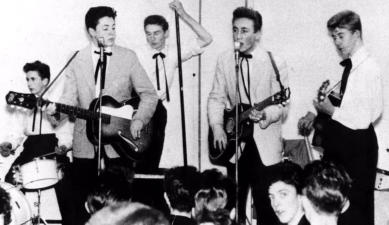
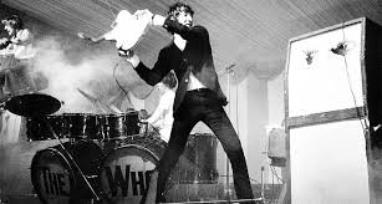

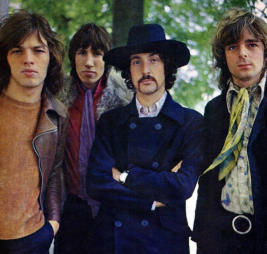
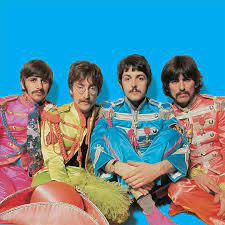
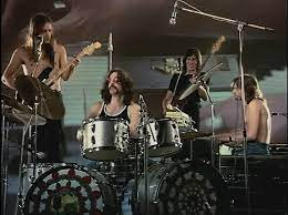
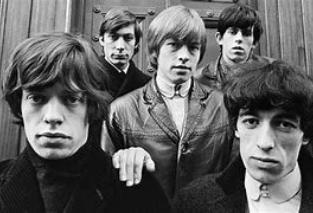
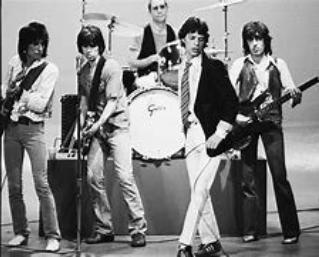
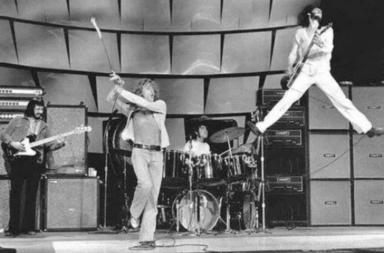

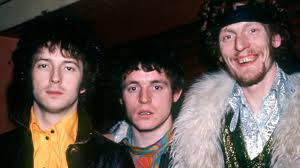
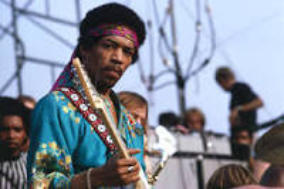

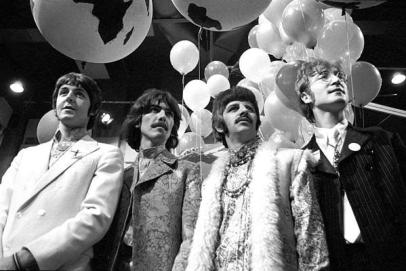
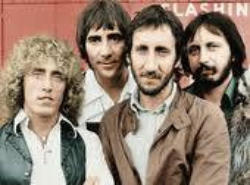
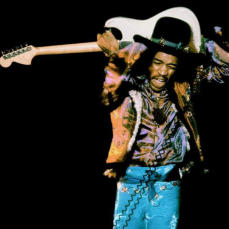







Classic Rock’s Golden Years -
The 60’s part One.
July 1957: Paul McCartney and John Lennon meet for the first time. They jam a few tunes after which Paul is invited to join John’s band the Quarrymen. The personnel and band name would change several times, but The Beatles would take the world by storm in the early 1960’s. Paul McCartney and John Lennon would become the most productive song writing partners in pop music history. George Harrison joined the group the following year but all the pieces did not fall together until Ringo Starr joined in 1962, creating the “Fab Four”. In 1967 The Beatles released Sgt. Pepper's Lonely Hearts Club Band, an early concept album primarily conceived by Paul McCartney that achieved widespread critical acclaim for its innovative writing, production and artwork. Over 30 million copies have been sold. Sgt Peppers influenced a new generation of musicians to create the new genre of progressive rock. Below are the Beatles in their Sgt. Peppers attire. Left to right: Ringo Starr, John Lennon, Paul McCartney, and George Harrison. The Beatles would release several more ground-breaking albums. During the White Album sessions in 1968, it was becoming clear that Paul and John’s partnership was beginning to come apart, with many of the songs being written and recorded without the others participation. In 1969 after a disastrous Get Back recording session, Paul asked George Martin to produce another record. Harrison brought in keyboardist Billy Preston whose good vibes he hoped would hold the band together. John wanted to have his and Paul’s compositions on opposite sides of the record. John announced his intentions to leave the band which he agreed not to make a public announcement until after the release. Somehow they managed to complete Abbey Road in 1969, which topped the charts for seventeen weeks. After their final release Let It Be, Paul officially announced the end of the Beatles in December of 1970. The Beatles would continue to sell records long after their breakup, with sales in the hundreds of millions. ------------------------------------------------------------------------------------------------------ October 1961: Mick Jagger is waiting for a train in Kent near London. He is carrying Chuck Berry and Muddy Waters records which get noticed by Keith Richards who is standing nearby. The two already know each other, having first met a decade earlier and immediately strike up a conversion centered around the these blues artists. In April 1962, they are in a band together called the “Blues Boys” and merge with “Blues Incorporated”, featuring Brian Jones and Charlie Watts. Inspired by a Muddy Waters song, they change their name to “The Rolling Stones” and play their first gig. Mick Jagger and Keith Richards would go on to write hundreds of songs together becoming a hit-making team for decades to come. Fame came at a price. In 1969 Brian Jones was kicked out of the band due to drug issues. A few months later he was found drowned in his swimming pool. The Stones first hired Mick Taylor, then settled on Ronnie Wood as a permanent replacement. This lineup remained stable until the departure of Bill Wyman in 1993. Below from left to right are Ron Wood, Keith Richards, Charlie Watts, Mick Jagger, and Bill Wyman. ------------------------------------------------------------------------------------------------------ June 1964: The Who’s Pete Townshend destroys his first guitar during a concert in England. Pete later admitted that it was an accident as he hit the venue’s low ceiling while jumping. Regardless he and many other Rock musicians would continue the carnage often keeping a cheap guitar on the side for the show. Copycats include Jimi Hendrix, Ritchie Blackmore (Deep Purple and Rainbow), and Nirvana’s Kurt Cobain. At right, Pete hard at work while Keith Moon destroys his drum kit, smoke bombs and all. In 1971, the Who released their iconic Who’s Next LP, their only LP to make number one in the UK charts. The LP contained the rock anthems “Won’t Get Fooled Again” and “Baba O’Reilly”. Who’s Next was the fallout from Pete’s “Lifehouse” project conceived during the Tommy tour. Lifehouse had a elaborate plot centered around a future without music. Unfortunately Pete was unable to fully communicate the concept to anyone else - including the band. The project was scrapped, but the best of the songs were included in this ground breaking hard rock LP. Below from left to right are John Entwistle, Roger Daltrey, Keith Moon and “Air” Pete Townshend. In 1978 after a protracted absence from recording and touring, The Who released Who Are You, with a single of the same name. It was their best selling record to date. Keith Moon overdosed just after the albums release. After working on other projects, Kenny Jones would eventually replace Keith. In 1999, The Who recruited Ringo Starr’s son Zakk on drums and they successfully toured and recorded for several decades with him. The Who sold over 100 millions records. ------------------------------------------------------------------------------------------------------ In 1966 super group “Cream” were formed by Eric Clapton, Jack Bruce, and Ginger Baker, since all three were considered “the cream of the crop” of English musicians. All three knew each other and had impressive resumes. The band quickly recorded several albums with great success including smash hits such as “Sunshine of your Love”, “White Room”, and “Politician”. The band was famous for their long jams during live shows with extensive solos by all three members. By 1969 after three studio and a live album, the band grew tired of formidable touring schedule and the fighting between Baker and Bruce. They completed their “Farewell” tour in 1969. Claptop and Baker would form Blind Faith with Steve Winwood in late 1969. Cream’s sound and blend of different styles would be a major influence in the Rock scene for decades to come. The “Cream” are shown below: from left to right Eric Clapton, Jack Bruce, and Ginger Baker, ------------------------------------------------------------------------------------------------------ Also in 1966, a young singer guitar player was struggling for gigs and tired of performing the same set every night with the traveling acts he had been working with. After moving to New York’s Greenwhich Village, Jimi Hendrix was noticed by the Animals manager Chas Chander who brought him to London to record a cover of “Hey Joe”. Chandler realized what a phenomenal artist Jimi was and recruited band members who “better suited his talent”. Drummer Mitch Mitchell and bassist Noel Redding were brought in and the Jimi Hendrix Experience was born. The Experience are pictured at below, from left to right: Noel Redding, Jimi Hendrix, and Mitch Mitchell. In November of 1966 they played a gig ad the Bag O’Nails club in London. In the audience that night were Eric Clapton, John Lennon, Paul McCartney, Pete Townshend, and Mick Jagger who were completely flabberghasted by Hendrix’ performance. The 1967 release of Are You Experienced featured featuring many of this early hits including “Hey Joe”, “Purple Haze”, and “Fire”. Founding author of Rolling Stone Noe Goldwasser described the it as “the album that shook the world, forever leaving it changed”. The Experience broke up in 1969 and Hendrix formed the “Band of Gypsies” with an album by the same name released in 1970. In one of the greatest tragedies in Rock, Jimi Hendrix died on September 18 1970 at age 27. Jimi’s sound and style were completely new and changed Rock music forever. Berklee school of music states “Jimi Hendrix is one of the most important electric guitar players in history, and is arguably the creator of the modern electric guitar sound.” He was a heavy influence on generations of guitar players to come, including Robin Trower, Jeff Beck, Stevie Ray Vaughan, Eddie Van Halen, and Steve Vai. ------------------------------------------------------------------------------------------------------ December 1967: David Gilmour is invited to Jam with Pink Floyd by drummer Nick Mason. The Floyd’s original guitar player, singer, and writer Syd Barrett had become increasingly erratic starting songs in the wrong key and changing arrangement without informing the other band members. When asked to join Gilmour accepted, the idea being that he would just hang in the background playing guitar while Barrett continued. Instead the change further distanced Barrett from the band. From left to right: David Gilmour, Roger Waters, Nick Mason, and Rick Wright. Gilmour reluctantly took his old friends place bringing a fresh song writing influence and new studio skills to the band. During the next few studio releases the band perfected their writing and recording styles culminating with the 1973 release of the blockbuster Dark Side of the Moon, one of the most critically acclaimed works in history, being certified 14 times platinum. The band would continue releasing monumental albums including Wish You Were Here, Animals, and The Wall after which hostility over control of the band between David Gilmour and Roger Waters caused a break up in 1985. Waters left the band and much to his dismay, Pink Floyd continued touring and recording without him. Below from left to right are David Gilmour, Roger Waters, Nick Mason, and Richard Wright. Additional graphics available at higher screen resolutions, such as tablets, laptops, and desktops.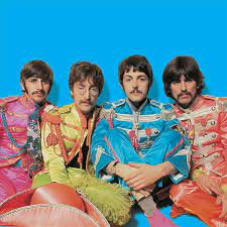
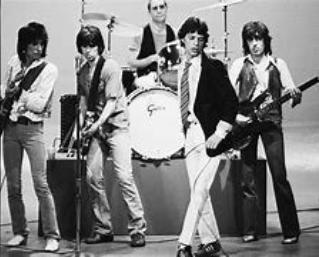






© 2022-2025 Lava-rox. All Rights Reserved.











